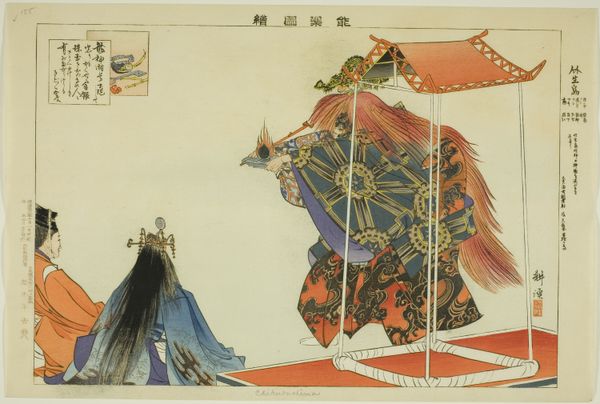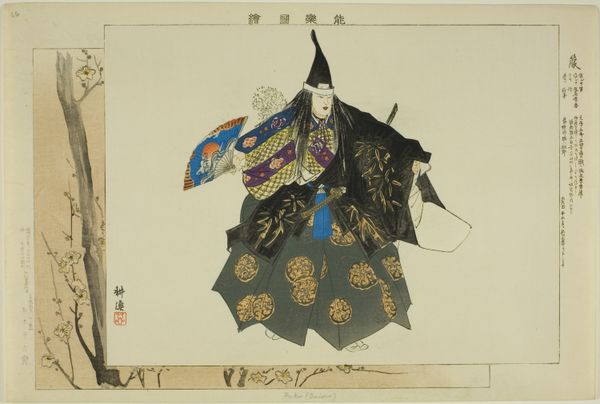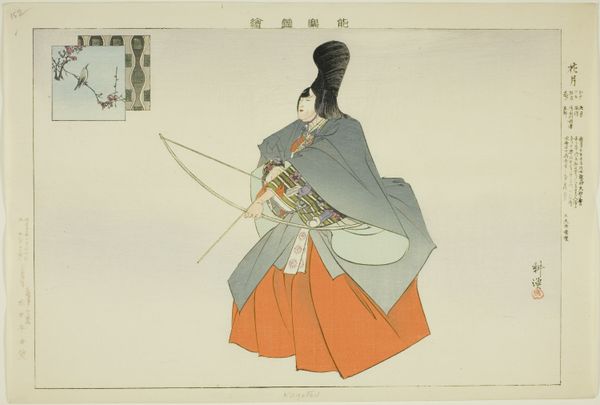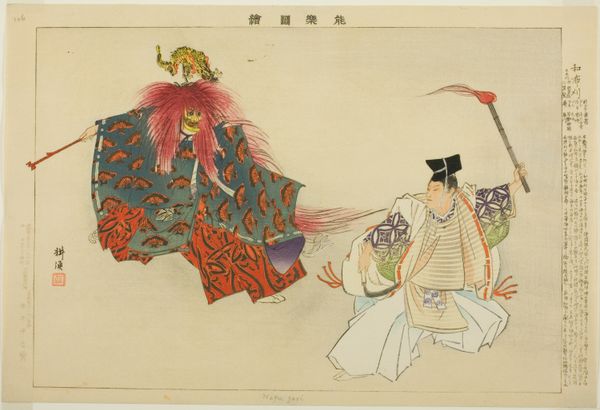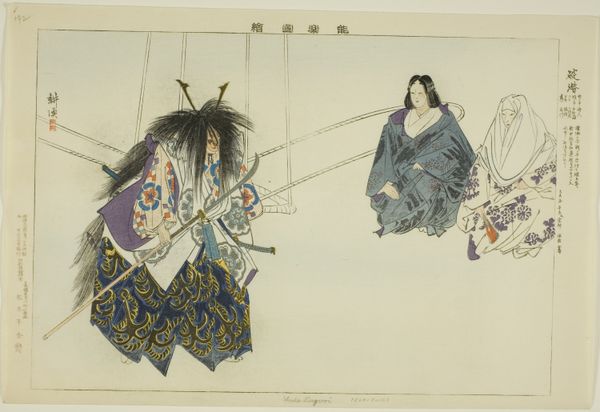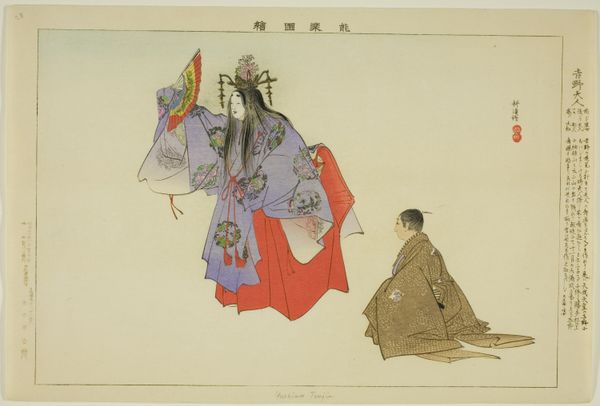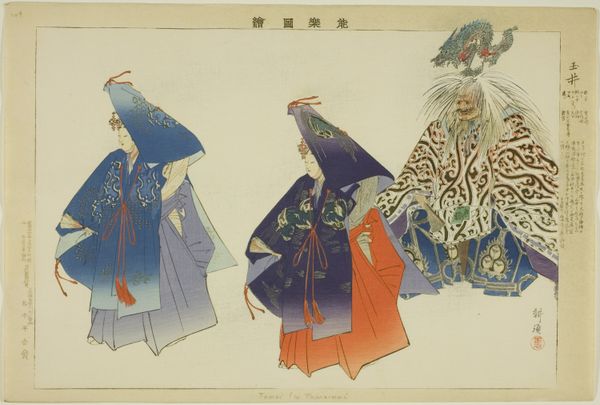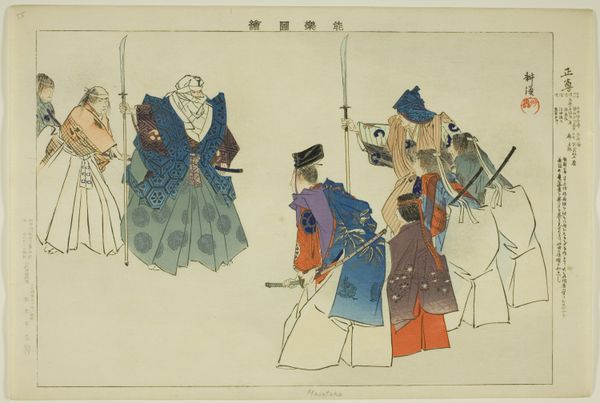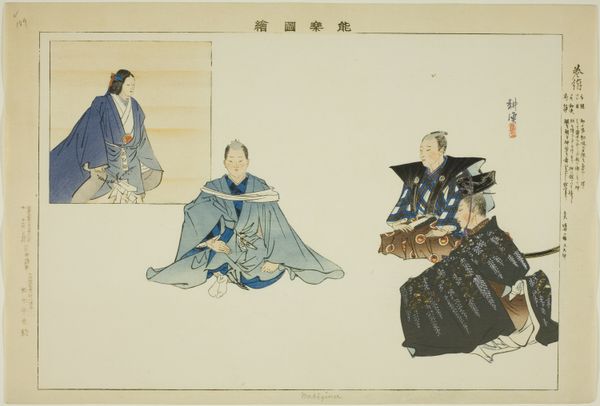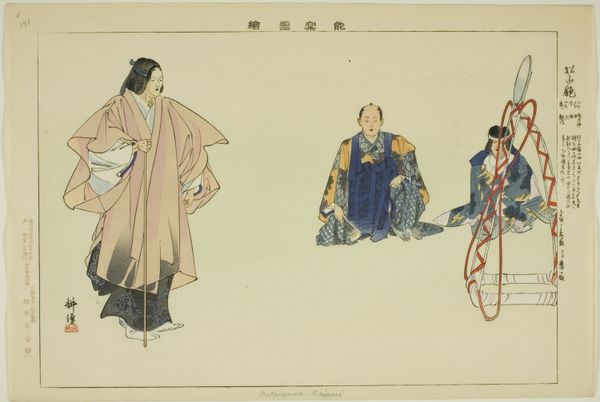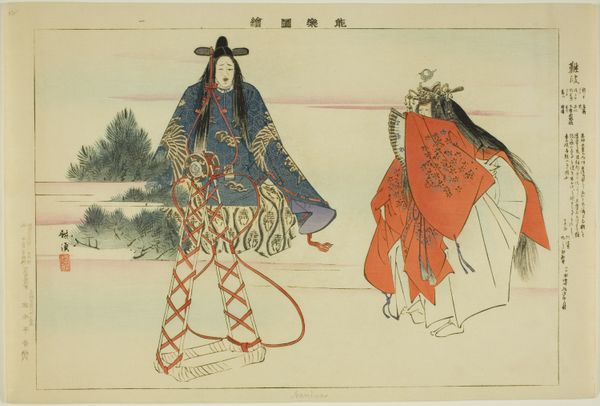
Shokun, from the series "Pictures of No Performances (Nogaku Zue)" 1898
0:00
0:00
Dimensions: Approx. 25.2 × 37.4 cm (10 × 14 4/3 in.)
Copyright: Public Domain
Tsukioka Kôgyo made this print, "Shokun," around the turn of the 20th century, using woodblocks and pigments on paper. This method, called *ukiyo-e*, involves carving separate blocks for each color, then carefully printing them in layers. The beauty of *ukiyo-e* lies not just in the final image but in the process itself, a collaboration between artist, carver, and printer. Each artisan brings unique skills, honed through years of training. The wood's grain influences the texture, the pigments create subtle variations, and the printer’s expertise ensures crisp lines and perfect registration. Look closely, and you can see the marks of the hand, the slight imperfections that make each print unique. This wasn't just art; it was a commercial enterprise, catering to a growing urban audience. *Ukiyo-e* prints were relatively affordable, making art accessible to the masses. They also reflect a collective effort, blurring the lines between individual genius and collaborative production. Ultimately, understanding this print requires appreciating the labor, the materials, and the social context in which it was created.
Comments
No comments
Be the first to comment and join the conversation on the ultimate creative platform.
